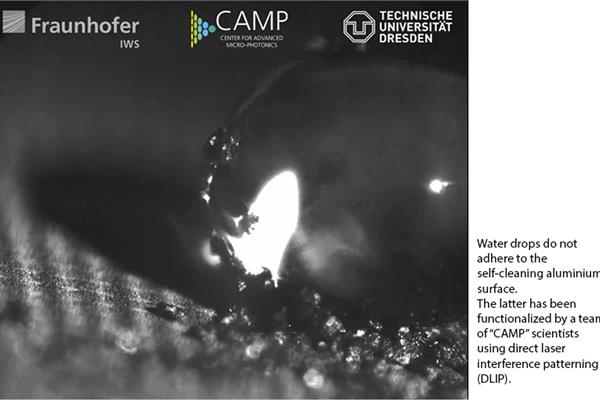
Scientists at TU Dresden and the Fraunhofer IWS have developed a periodic surface structure, which is water and ice repellent and also removes dirt particles.
After years of developing functionalised surfaces with laser-based manufacturing processes, with a special focus on aluminium, a team of scientist at TU Dresden, in collaboration with the Fraunhofer IWS, have structured an aluminium plate with a laser process in such a way that water droplets no longer adhere and dirt particles can be removed from the surface without chemical cleaning agents or additional effort.
The newly developed periodic surface structure with direct laser interference patterning (DLIP) removes dirt particles exclusively by rolling drops and is also water and ice repellent.
"Aluminium is used in many branches of industry - whether in the automotive sector, aircraft construction or the food industry. The use of aggressive cleaning chemicals is particularly critical in the latter, as we naturally do not want to associate these with our food," says Stephan Milles, PhD student at TU Dresden.
The Dresden scientists took a close look at the function of self-cleaning laser-structured aluminium. A special camera was used to analyse the self-cleaning effect of the aluminium surfaces and filmed the process at 12,500 frames per second.
Thomas Kuntze, scientist in the Microtechnology Technology Field at the Fraunhofer IWS, explains: "This way we can see perfectly how the water drop can remove the dirt from the aluminium surface. This method is also suitable for understanding other processes, such as laser cutting and welding or additive manufacturing".
The method was developed in close collaboration with the Fraunhofer IWS. Together with the Dresden Institute the professorship for laser-based methods of a large area surface structuring at the TU Dresden operates the "CAMP - Center for Advanced Micro Photonics".
The scientific evidence of the self-cleaning effect has been published in the journal "Applied Surface Science".